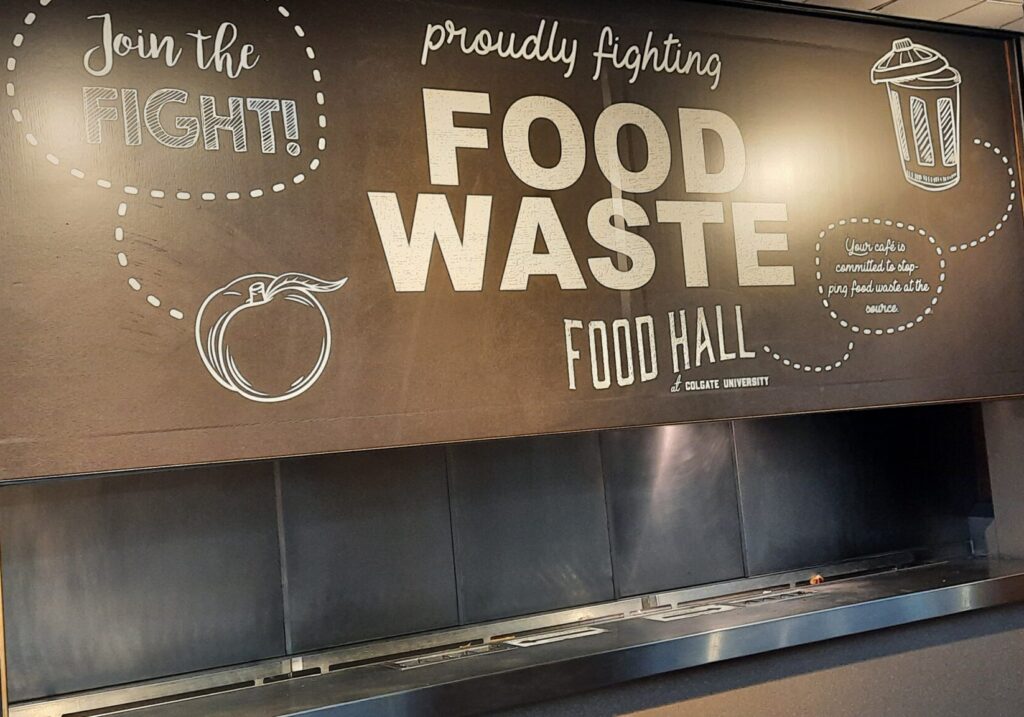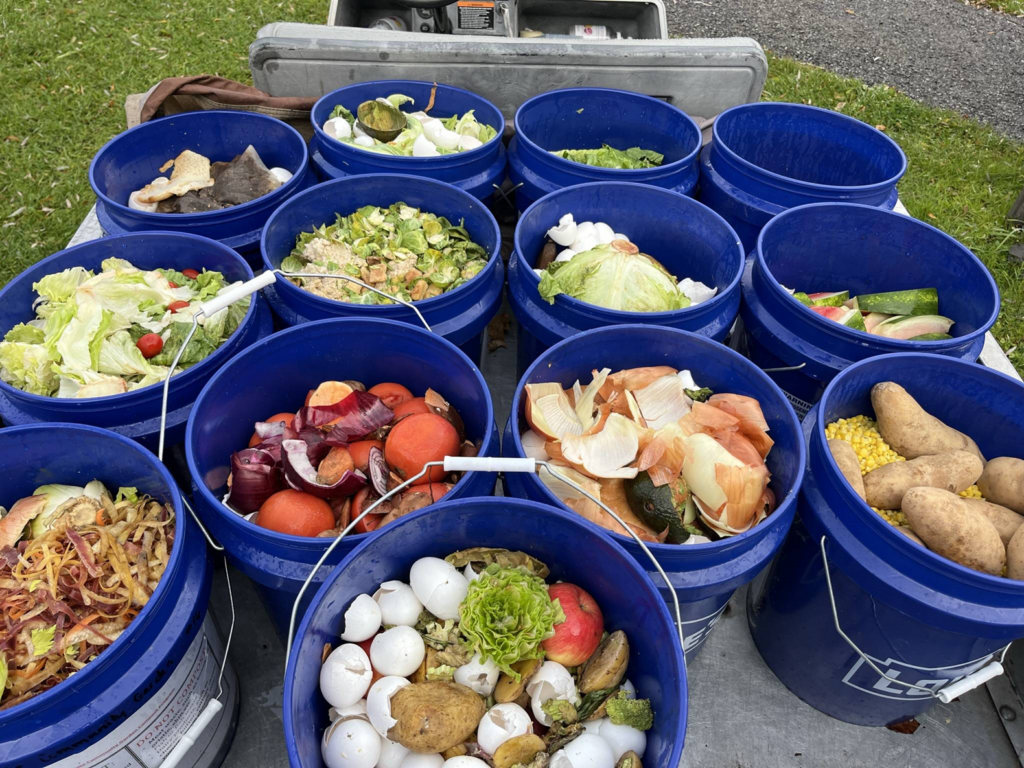07/16/24 · CET Launches New Carbon Conscious Business Accreditation
06/21/24 · Julia Riseman: Your small change makes a big difference at CET
12/26/23 · CT Compost Alliance to Increase Composting Efforts in Connecticut
11/27/23 · Retailers Buckle Down to Accelerate Food Waste Reduction
11/24/23 · Our View: Cheers and jeers to recent newsmakers
11/19/23 · Should utilities pay the upfront cost of clean energy?
11/14/23 · How Can I Donate or Recycle Salvageable Cabinetry and Fixtures from My Renovation?
11/11/23 · Western Mass Business Show Podcast - Ashley Muspratt & Emily Gaylord
10/30/23 · Workshops on reducing food waste, this week in the Adirondacks
7/17/23 · $100,000 grant seeks to reduce Michigan food waste
6/5/23 · Martha's Vineyard deconstruction diverts 10 tons
5/24/23 · State Environmental Officials Announce Student and School Recipients of Green Team Awards
5/23/23 · Championing Food Waste Reduction: Waste Free Greenwich Celebrates Local "Waste Warriors"
5/19/23 · Talking Trash: Composting Tips, Local Opportunities To Help The Planet
4/26/23 | As CT tried to reduce food waste, here's how some local restaurants are cutting back
3/1/23 | The Center for EcoTechnology: Helping Restaurants Save Money and Reduce Waste
12/2/22 | Have EV, will travel: Beating 'range anxiety' on road trip to Quebec
11/30/22 | Massachusetts Municipal Wholesale Electric Details Model to Develop Carbon-Based Incentives
11/28/22 | This nonprofit helps old building materials find new homes
9/20/22 | Lots of Food Gets Tossed. These Apps Let You Buy It, Cheap.
9/18/22 | Reader Raves 2023
9/2/22 | Seggos, Feeding New York State: 1-million-pound milestone in ongoing food waste & donation initiative
9/1/22 | City to Launch Study to Reduce Food Waste
8/31/22 | Commissioner Sggos and Feeding New York Announce One-Million-Pound Mileston in Ongoing Food Waste and Donation Initiative
8/29/22 | Jersey City mapping food rescue opportunities with support from NRDC grant
8/26/22 | Jersey City to kickoff 'rescue mapping' effort to combat food waste and insecurity
8/25/22 | Jersey City Launches First Food Rescues Mapping; Saving Taxpayer Dollars,Fighting Hunger, and Promoting Sustainability
8/19/22 | Cleveland picks Rust Belt Riders, others to compost or reuse leftover West Side Market food
8/15/22 | Ashley Muspratt: An alternative to gas, propane stoves
5/17/22 | In Greenwich, Food Matters Challengers Announced!
3/18/22 | EcoBuilding Bargains Builds a Global Presence Online
2/11/22 | Restaurant-Centered Series Speaks on Reducing Food Waste to Benefit Environment
2/9/22 | Orange County partners with Center for EcoTechnology to reduce food waste
2/1/22 | Orange County To Provide Free Waste Reduction Assistance to Local Businesses
1/3/22 | Inventory in Abandoned School Becomes Others’ Treasures
12/7/21 | Berkshire Environmental Action Team converting old Pittsfield church into its new home
11/16/21 | Sustainability Committee’s plans for a more eco-friendly campus
11/15/21 | Colorado and Utah receives $40K in funding to reduce source pollution
11/10/21 | EPA awards more than $230,000 for recycling and food waste prevention projects in Illinois, Michigan, and Ohio
11/4/21 | URI’s food recovery program reduces food waste, improves food access for Rhode Islanders
10/22/21 | Weckerly's Ice Cream, Birchtree Catering among Philly businesses joining effort to reduce food waste
10/22/21 | Philly to compost 150 tons of waste a year from meals served at rec centers
7/19/21 | Your Clothes Create More Plastic Waste than Plates or Straws | Opinion
3/5/21 | Sustainable mission: Northampton man dives full on into home renovation project to showcase sustainability
2/19/21 | What is Mass Save? Partnership offers chance to lower energy costs, emissions
1/7/21 | How Philadelphia’s Aiming for Zero Waste
11/20/20 | Mixed results': Some restaurants recycle properly, others don't
11/9/20 | EPA awards over $170,000 for recycling and food waste projects in the Great Lakes region
11/6/20 | EPA awards over $170K for recycling and food waste projects in the Great Lakes Region
10/6/20 | US EPA announces $3M in funding for food waste AD projects
10/1/20 | Massachusetts-based Center for EcoTechnology Among 12 Organizations to Receive EPA Funding to Support Anaerobic Digestion in Communities
10/1/20 | Farm to table to landfill? EPA asks nonprofit with Pittsfield office to tackle food waste problem
10/1/20 | EPA funds 12 anaerobic digestion projects
6/11/20 | A Look at Some New Englanders’ Food Recovery Work
4/24/20 | Island Grown Recognized by EPA
3/23/20 | Organic waste legislative update
3/6/20 | Merced City Council approves 'painful' trash collection rates increase, lasting 5 years
1/19/20 | Springfield city councilors, state representatives endorse Sen. Ed Markey
1/11/20 | Senator Ed Markey tours western Massachusetts
11/28/19 | Green Fund creates awareness of food waste through “Weigh the Waste”
11/3/19 | Workshops to offer tips, resources for waste reduction, composting
10/8/19 | Landlords, tenants to learn apartment energy upgrades at workshop
10/3/19 | Framingham Recycles: What To Do With ‘E-Waste’
9/17/19 | A New Report Details Impact Of Food-Waste Reduction Efforts
9/5/19 | Brighter Bites to participate in industry-first Nonprofit Food Recovery Accelerator
6/13/19 | Workshop to address tenant comfort, reducing energy bills
6/5/19 | How The State's Commercial Food Waste Disposal Ban Is Working
6/2/19 | Nylen Recognized with Community Service Award in Williamstown
5/31/19 | New York State Pollution Prevention Institute to host June 4 event on managing food waste
5/8/19 | Key Takeaways from Day Two of WasteExpo 2019
4/25/19 | Center for EcoTechnology Honors Williamstown's Penner
4/18/19 | Students, organizations showcase sustainability projects at UMass Earth Day Festival
4/14/19 | Solar Access program a 'game-changer' — just ask this Adams homeowner
4/2/19 | Victory is sure to be sweet for winners of 12th annual BCC Cake Show and Competition
1/21/19 | CET president to explain Solar Access in Conway
1/18/19 | Massachusetts issues notices of noncompliance for violations of state recycling regulations
11/30/18 | Solar bonus is latest clean energy incentive for Massachusetts farmers
11/29/18 | Waste Audits Deliver Deeper Analysis for Multilocation Businesses
11/11/18 | First Zero Waste meeting draws 50
10/31/18 | EPA Healthy Community Grants Will Help Protect Health in Conn.
9/14/18 | National Sword cuts into recycling revenues
9/12/18 | The U.S. recycling industry is changing: How you can help
8/29/18 | Zero Waste Connecticut Schools Coalition Forming
4/19/18 | Repairing, reusing, retooling: Area homeowners are finding ways to be green
3/23/18 | Egremont Green News: Join the push for renewable energy
2/14/18 | Is clean energy moving ahead fast enough in Western Massachusetts?
1/1/18 | Nonprofit Jump-Starts Food Diversion in Mass., Expands Through Northeast
11/20/17 | Symposium explores reducing food waste (and it’s not just by composting)
11/13/17 | CET wins award
11/6/17 | Berkshires Beat: Center for EcoTechnology Wins 2017 Composting Challenge
10/6/17 | Business & Innovation Expo To Feature ‘Ask An Expert Roundtable’
9/21/17 | Everyday People: Center for EcoTechnology helps people and businesses reduce waste and save energy
9/21/17 | Middlebrook School focuses on food donations in cafeteria
8/31/17 | How One Maryland County is Getting Businesses to Report on Recycling
6/26/17 | What Goes Into Managing Recycling for Office Properties
6/4/17 | Fledgling Berkshire Communities Green Network seeks to rally 'green communities'
5/3/17 | Mass Save rebates offer big savings for energy efficiency
4/18/17 | Examining Best Practices in Organics Separation and Collection
1/5/17 | Federal Funding Helps Massachusetts Farms Save Energy
12/12/16 | Let’s Turn This Planet Around on Wednesday
11/29/16 | Stretch Codes Pull Toward Green Communities
11/25/16 | Grants aim to reduce food waste
11/19/16 | Connecticut using fed funds for projects to curb food waste
11/18/16 | Connecticut wastes too much food, but help is on the way
9/26/16 | Center For EcoTechnology Marks 40 Years Of Green Innovation
9/15/16 | Big-scale recycling: An entire house; Lumber from demolition headed for resale, not landfill
8/2/16 | DevelopSpringfield Forges Collaborations In Advance Of Redevelopment
6/4/16 | Eighth-graders explore possible future careers at MCLA fair
5/25/16 | County Fare: CET earns EPA honor for food-waste recycling program
5/12/16 | Center For EcoTechnology Receives Environmental Merit Award
4/22/16 | EcoBuilding Bargains in Springfield helps homeowners, planet
4/13/16 | Connecticut lags in diverting food waste, despite law intended to jumpstart change
3/21/16 | Previewing WasteExpo’s All New Food Recovery Forum
3/18/16 | Western Mass Home and Garden Show at Big E has more solar, optimism on display
1/28/16 | A County Composting Effort
12/23/15 | Newey recognized at Green Giants event
12/11/15 | Net-metering limits could dim prospects of solar projects in several Berkshire communities
12/9/15 | National food waste bill aims to educate, reduce and divert
11/26/15 | New apps can reduce food waste and help channel leftovers to a good cause
8/27/15 | Grant eases congestion, safety concerns at Bald Hill compost site
9/28/14 | Recycle all that cardboard






